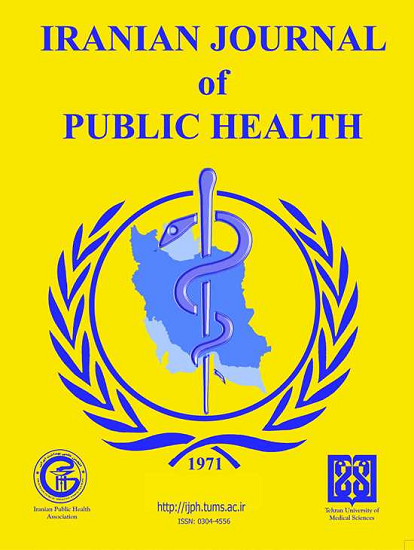The Relationship between Social Media Addiction and Eating Disorders among Followers of Social Media Influencers
Abstract
Background: We aimed to evaluate the relationship between social media addiction and eating disorders in the followers of social media influencer.
Method: The study (n=561) was conducted with 112 men and 449 women, who follow a social media influencer and volunteered to participate in the study. Social media addiction scale for adults form (SMAS-AF) was used to evaluate the social media addiction, and ORTO-15 scale was used to determine the eating disorders.
Results: 80.9% of the participants had orthorexia nervosa and 19.1% were normal. BMI and social media addiction scale total score were significantly higher than optimal rates and ORTO-15 total score was significantly low (P<0.05). Age, anthropometric measurements, sub-scores of SMAS-AF and clinical domain sub-score of orthorexia nervosa were significantly different between the groups (P<0.05). It was significantly found that the emotional domain sub-score increased as the virtual tolerance score and virtual communication score increased (P<0.05). A relationship was found between the total score of the social media addiction scale and the emotional domain sub-score (P<0.05).
Conclusion: Social media use may negatively affect individuals’ eating behaviors and contribute to body image dissatisfaction.
2. Mattar L, Huas C, Godart N (2012). Rela-tionship between affective symptoms and malnutrition intensity in severe An-orexia Nervosa. Plos One , 7(11):e49380.
3. Mattar L, Thiebaud MR, Huas C, Godart N (2012). Depression, anxiety and obses-sive-compulsive symptoms in relation to nutritional status and outcome in severe anorexia nervosa. Psychiatry Research, 200(2-3):513-7.
4. Skella P, Chelmi ME, Panagouli E, et al (2022). Orthorexia and Eating Disorders in Adolescents and Young Adults: A Sys-tematic Review. Children (Basel), 9(4), 514.
5. Yılmazel G (2021). Orthorexia tendency and social media addiction among can-didate doctors and nurses. Perspect Psychi-atr Care, 57(4), 1846-1852.
6. Kalra S, Kapoor N, Jacob J (2020). Or-thorexia nervosa. J Pak Med Assoc, 70(7), 1282-1284.
7. Sidani JE, Shensa A, Hoffman B, Hanmer J, Primack BA (2016). The association be-tween social media use and eating con-cerns among US young adults. J Acad Nutr Diet, 116(9), 1465-1472.
8. Jiotsa B, Naccache B, Duval M, Rocher B, Grall-Bronnec M (2021). Social media use and body image disorders: Associa-tion between frequency of comparing one’s own physical appearance to that of people being followed on social me-dia and body dissatisfaction and drive for thinness. Int J Environ Res Public Health, 18(6), 2880.
9. Youssef L, Hallit R, Kheir N, Obeid S, Hal-lit S (2020). Social media use disorder and loneliness: any association between the two? Results of a cross-sectional study among Lebanese adults. BMC Psy-chol, 8(1), 56.
10. He Z, Yang W (2022). Impulsiveness as po-tential moderators of the relation be-tween social media dependence and eat-ing disorders risk. BMC Psychol, 10(1):120.
11. Zeeni N, Abi Kharma J, Malli D, Khoury-Malhame M, Mattar L 2024). Exposure to Instagram junk food content negatively impacts mood and cravings: a random-ized controlled trial. Appetite, 195:107209.
12. Şahin C, Yağcı, M (2017). Sosyal medya bağımlılığı ölçeği- yetişkin formu: geçerlilik ve güvenirlik çalışması. Ahi Evran Üniversitesi Kırşehir Eğitim Fakültesi Dergisi, 18(1), 523-538.
13. Arusoğlu G (2006). Sağlıklı beslenme takıntısı (ortoreksiya) belirtilerinin incelenmesi, Orto-15 ölçeğinin uyar-lanması. Hacettepe Üniversitesi Sağlık Bilimleri Enstitüsü Diyetetik Programı Bilim Uzmanlığı Tezi, 2006.
14. Niedzielski A, Kaźmierczak-Wojtaś N (2021). Prevalence of Orthorexia Nervo-sa and Its Diagnostic Tools-A Literature Review. Int J Environ Res Public Health,18(10):5488.
15. Vannucci A, Simpson EG, Gagnon S, Ohannessian CM (2020). Social media use and risky behaviors in adolescents: A meta-analysis. J Adolesc, 79, 258-274.
16. Sağar ME (2019). Yetişkin bireylerde sosyal medya bağımlılığının irdelenmesi. Sağlık Bilimlerinde Eğitim Dergisi, 2(1), 29-42.
17. Wade A. The impacts of exposure to fat talk and fat talk challenging through so-cial media on women (Doctoral disser-tation, Texas Woman's University, 2016).
18. Andsager JL (2014). Research directions in social media and body image. Sex Roles, 71, 407-413.
19. Yurtdaş-Depboylu G, Kaner, G, Özçakal S (2022). The association between social media addiction and orthorexia nervo-sa, eating attitudes, and body image among adolescents. Eat Weight Disord, 27(8):3725-3735.
20. Zeeni N., Abi Kharma J, Mattar L (2021). Social Media Use and Posting: Associa-tions with Body Image Dissatisfaction and Dietary Behavior in Pregnant Women. Current Psychology, 42: 4948-4955.
21. Kalash N, Harb H, Mattar L, et al (2019). Movie violence acutely affects food choices in young adults. Eat Behav, 33:7-12.
22. Asil E, Yılmaz MV, Ayyıldız F, Yalçın T (2023). The effect of social media use on orthorexia nervosa: a sample from Tur-key. Nutr Hosp, 40(2):384-390.
23. Sezer Katar K, Şahin B, Kurtoğlu MB ((2024). Healthy orthorexia, orthorexia nervosa, and personality traits in a community sample in Turkey. Int J Psychiatry Med, 59(1):83-100.
| Files | ||
| Issue | Vol 54 No 2 (2025) | |
| Section | Original Article(s) | |
| DOI | https://doi.org/10.18502/ijph.v54i2.17909 | |
| Keywords | ||
| Social media Social media addiction Eating disorders Nervosa | ||
| Rights and permissions | |

|
This work is licensed under a Creative Commons Attribution-NonCommercial 4.0 International License. |





